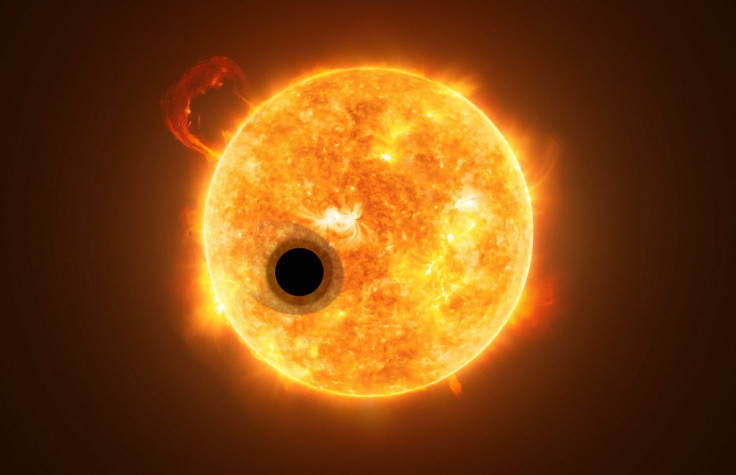Hubble's Helium Find On Distant WASP-107b Is First For An Exoplanet

For the first time in the history of cosmic observations, scientists have detected signs of helium, one of the main constituents of Neptune and Saturn, on a planet sitting several hundred light years away from our stellar neighborhood.
The inert gas, according to the theoretical models, is the second most common element in the universe after hydrogen. However, despite searching it for years, scientists weren’t able to detect its presence anywhere beyond our solar system.
But now the wait is finally over, thanks to NASA and ESA’s Hubble Space Telescope. Just recently, an international team of astronomers, led by Jessica Spake from the University Of Exeter, United Kingdom, used the space telescope to analyze the starlight passing through the upper atmosphere of an exoplanet dubbed WASP-107b and discovered helium in abundance.
The signal of the gas, according to a release from the University, was so massive that the scientists now believe the upper atmosphere of WASP-107b could be going up to thousands of kilometers into space. As a result of this, several gases present in the atmosphere might be spewing out in space. This would mean that the distant world is losing some 0.1 to 4 percent of its atmospheric mass every billion years.
Discovered just last year, WASP-107b fits into the category of "super-Neptunes" or planets that are five to seven times as large as Earth and is located some 200-light-years away from us in the constellation Virgo. Though this exoplanet is just as big as Jupiter in terms of size, it’s density is just 12 percent of that on Jupiter.
“The strong signal from helium we measured demonstrates a new technique to study upper layers of exoplanet atmospheres in a wider range of planets,” Spake said in a statement.
The researchers' idea is to measure the light in infrared wavelengths as it changes while passing through the planet’s atmosphere. This not only proves effective in characterizing the atmospheric composition but is also better than the current method of measuring optical and ultraviolet wavelength, which only works for planets located in close proximity.
“We know there is helium in the Earth’s upper atmosphere and this new technique may help us to detect atmospheres around Earth-sized exoplanets — which is very difficult with current technology,” Spake added.
The revolutionary technique may also help scientists determine how long an exoplanet may hold on to its atmosphere. In addition, it may get even more effective with the launch of James Webb Space Telescope in 2020.
“Our new method, along with future telescopes such as the NASA/ESA/CSA James Webb Space Telescope, will allow us to analyze atmospheres of exoplanets in far greater detail than ever before,” study co-author David Sing said in the statement.
The study, titled "Helium in the eroding atmosphere of an exoplanet," was published May 2 in the journal Nature.
© Copyright IBTimes 2024. All rights reserved.




















